Wander Through Hanoi: Highlights of Vietnam’s Capital
Hanoi, the capital city of Vietnam, is a vibrant blend of ancient traditions and modern influences. As you wander through its bustling streets, you’ll discover a city where history meets culture, and where every corner tells a story. From the labyrinthine alleys of the Old Quarter to the serene waters of Hoan Kiem Lake, Hanoi offers a wealth of experiences for every traveler. This guide will take you through the highlights of this captivating city, offering insights into its most iconic sights and cultural treasures.
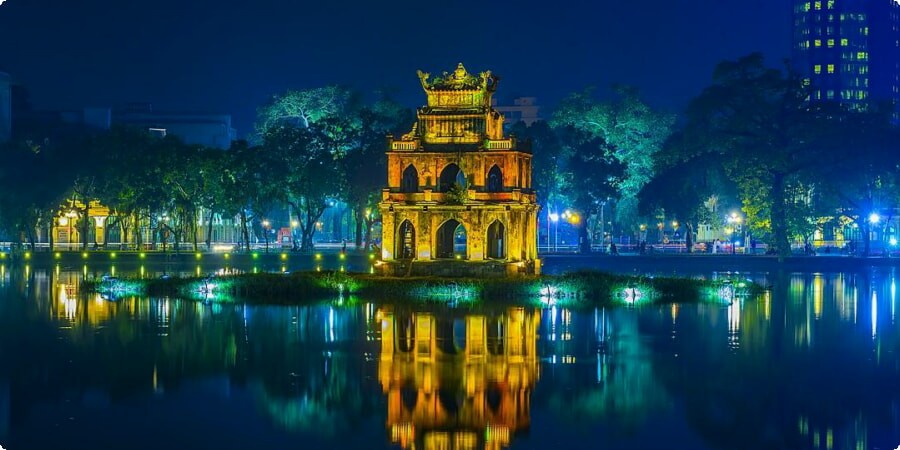
The Old Quarter: A Maze of History and Commerce
The heart of Hanoi lies in its Old Quarter, a lively district where the past and present coexist in a chaotic yet charming blend. The Old Quarter, with its narrow streets named after the goods once sold there, is a testament to Hanoi’s vibrant commercial history. Here, you can stroll through alleys lined with traditional shop houses, many of which have been standing for centuries.
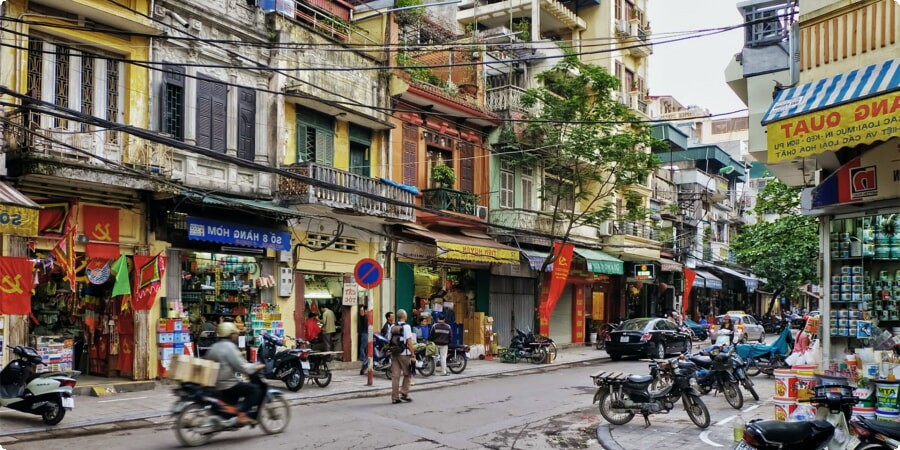
Each street in the Old Quarter has its unique character, from Hang Bac, known for its silversmiths, to Hang Gai, famous for silk and embroidery. As you explore, you’ll encounter an array of local artisans, food vendors, and bustling markets, making it the perfect place to experience the authentic flavor of Hanoi. Don’t miss the chance to visit Dong Xuan Market, the largest in the city, where you can find everything from fresh produce to traditional handicrafts.
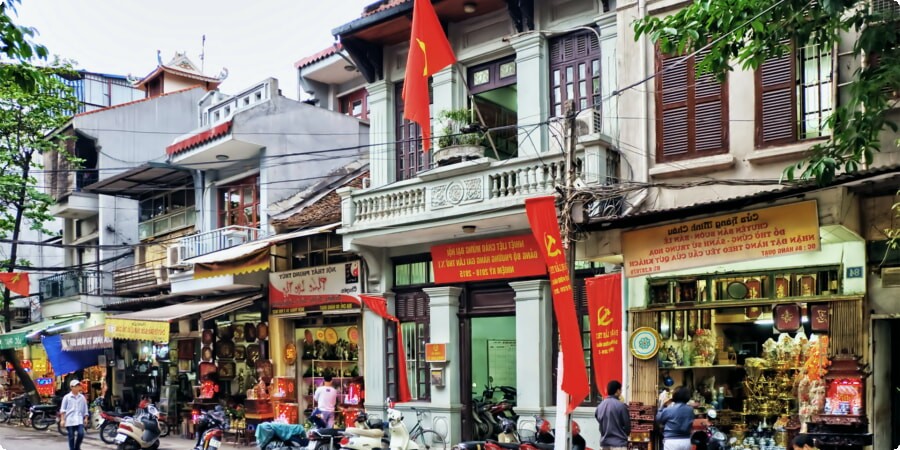
Explore the Old Quarter on Google Maps
Learn more about Hanoi’s Old Quarter on Wikipedia
Hoan Kiem Lake: The Heart of Hanoi
In the center of Hanoi lies Hoan Kiem Lake, a peaceful oasis amidst the city’s hustle and bustle. The lake, whose name means “Lake of the Returned Sword,” is steeped in legend. According to local folklore, Emperor Le Loi was given a magical sword by the gods to drive out Chinese invaders. After his victory, a giant turtle emerged from the lake, took the sword, and returned it to the gods, thus giving the lake its name.

Surrounded by weeping willows and flowering trees, Hoan Kiem Lake is a popular spot for both locals and tourists. Early in the morning, you’ll find residents practicing tai chi, while in the evening, the lake becomes a gathering place for people to relax and socialize. In the middle of the lake stands the Turtle Tower (Thap Rua), a small pagoda that adds to the lake’s mystical charm. Nearby, you can visit the Ngoc Son Temple, dedicated to General Tran Hung Dao, a national hero who fought against the Mongols in the 13th century.

Visit Hoan Kiem Lake on Google Maps
Discover more about Hoan Kiem Lake on Wikipedia
The Temple of Literature: Vietnam’s First University
A visit to Hanoi would be incomplete without exploring the Temple of Literature, a revered site that dates back to 1070. Originally built as a Confucian temple, the Temple of Literature was later expanded to become Vietnam’s first university, known as the Imperial Academy. It was here that the nation’s brightest minds were educated, and to this day, the temple remains a symbol of learning and intellectual achievement.
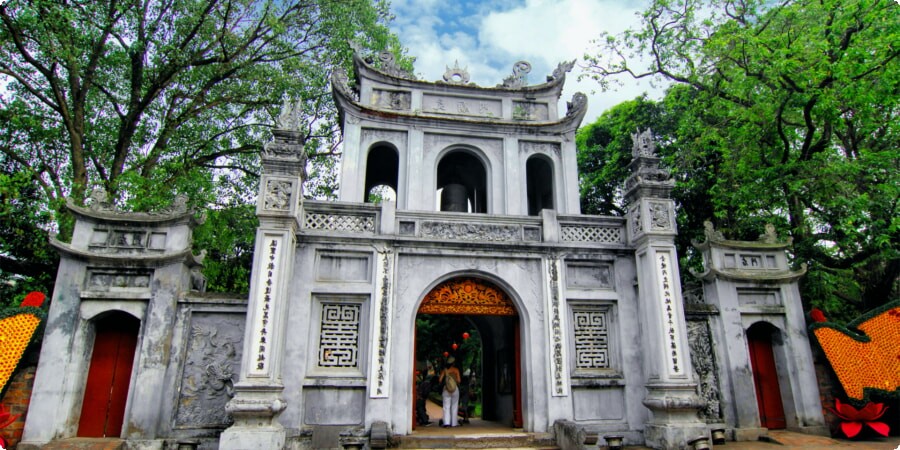
The Temple of Literature is a peaceful sanctuary away from the city’s noise, with its ancient pavilions, tranquil courtyards, and lotus ponds. As you walk through the temple’s five courtyards, you’ll encounter stelae mounted on the backs of stone turtles, inscribed with the names of graduates who achieved the title of doctor. The Well of Heavenly Clarity, a beautiful reflection pool, adds to the temple’s serene atmosphere. The architecture and layout of the temple reflect traditional Vietnamese design, making it a must-visit for those interested in the country’s cultural heritage.
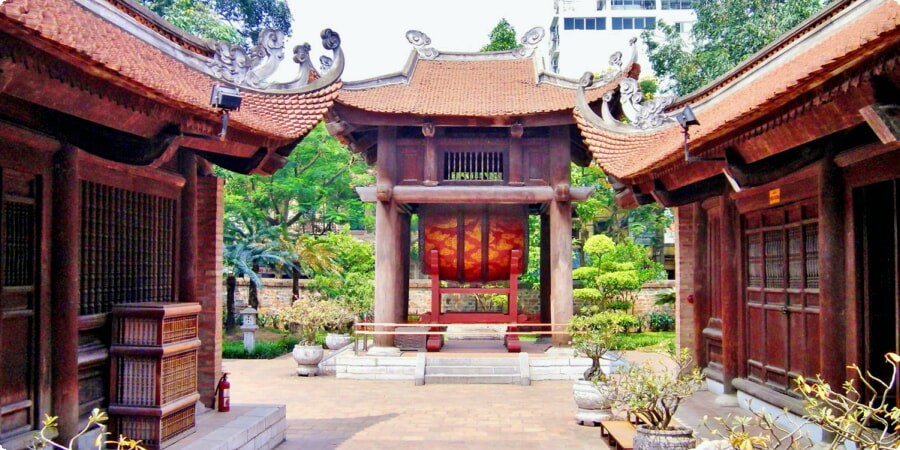
Explore the Temple of Literature on Google Maps
Learn more about the Temple of Literature on Wikipedia
Ho Chi Minh Mausoleum: A Tribute to the Father of the Nation
One of Hanoi’s most important landmarks is the Ho Chi Minh Mausoleum, a solemn monument dedicated to the beloved leader who led Vietnam to independence. The mausoleum, located in Ba Dinh Square, houses the embalmed body of Ho Chi Minh, known affectionately as “Uncle Ho.” This imposing structure is inspired by Lenin’s Mausoleum in Moscow but features distinct Vietnamese architectural elements.
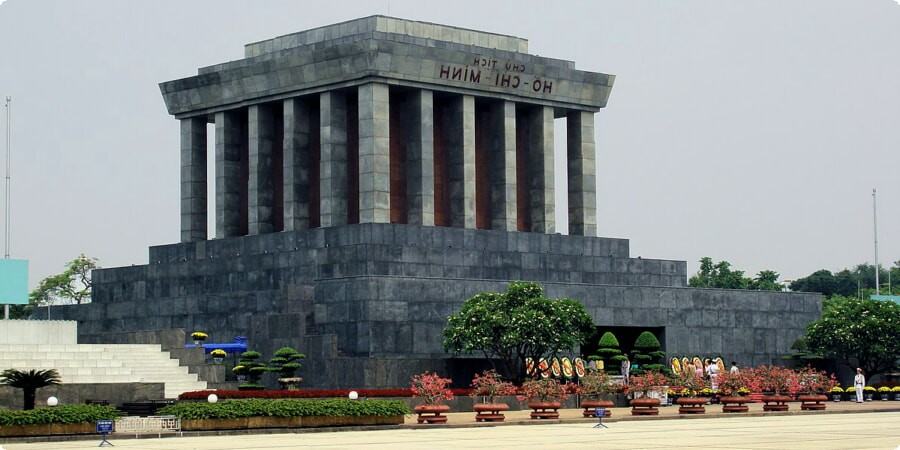
Visiting the Ho Chi Minh Mausoleum is a deeply respectful experience. The atmosphere is quiet and contemplative, as visitors file through the building to pay their respects. Nearby, you can explore the Presidential Palace, a French colonial building that once served as the residence of the Governor-General of Indochina, and the Ho Chi Minh Museum, which provides an in-depth look at the life and legacy of the leader.

Visit the Ho Chi Minh Mausoleum on Google Maps
Discover more about Ho Chi Minh Mausoleum on Wikipedia
The French Quarter: Colonial Elegance and Architecture
Hanoi’s French Quarter is a testament to the city’s colonial past, with its grand boulevards, elegant villas, and European-style architecture. This district, located to the southeast of Hoan Kiem Lake, is home to some of Hanoi’s most iconic buildings, including the Hanoi Opera House, modeled after the Palais Garnier in Paris, and the St. Joseph’s Cathedral, which bears a striking resemblance to Notre Dame in Paris.
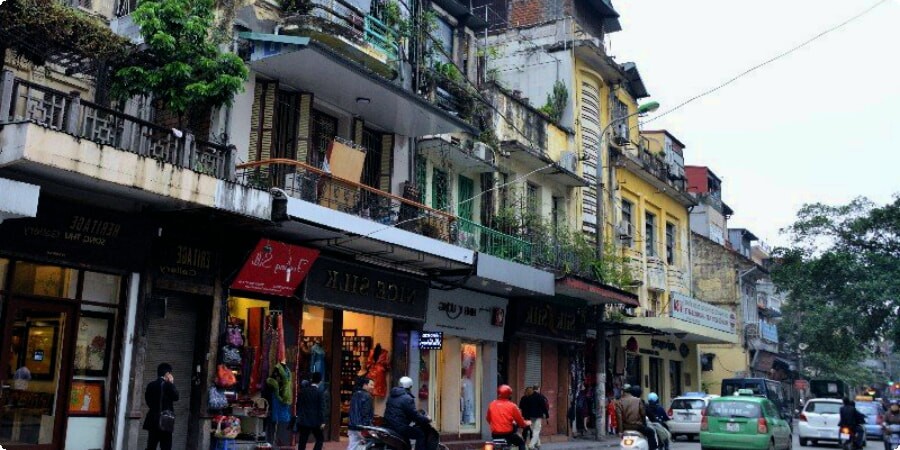
As you wander through the French Quarter, you’ll notice the contrast between the wide, tree-lined avenues and the bustling streets of the Old Quarter. The area is also known for its upscale boutiques, cafes, and fine dining restaurants, making it a great place to indulge in a leisurely afternoon. For those interested in history and architecture, a visit to the National Museum of Vietnamese History, housed in a beautiful colonial-era building, is highly recommended.
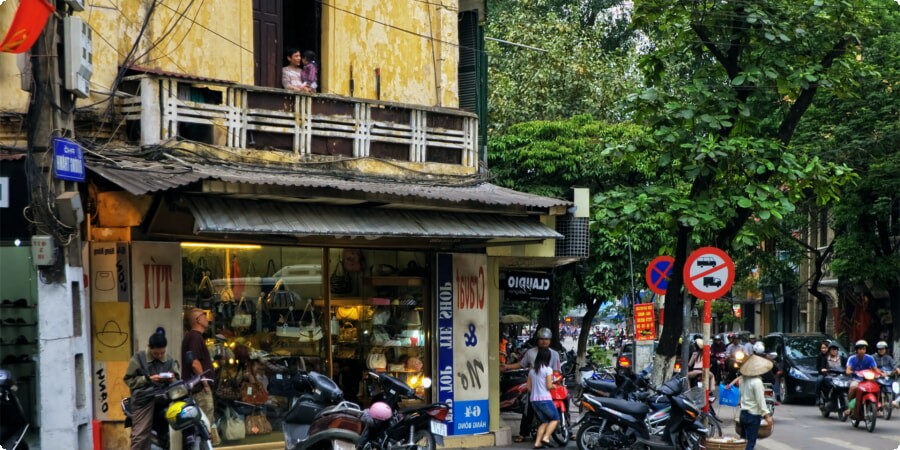
Explore the French Quarter on Google Maps
Learn more about Hanoi’s French Quarter on Wikipedia
Hanoi’s Culinary Scene: A Food Lover’s Paradise
Hanoi is a haven for food lovers, offering a rich tapestry of flavors that reflect the city’s diverse cultural influences. From street food stalls to high-end restaurants, Hanoi’s culinary scene is a feast for the senses.
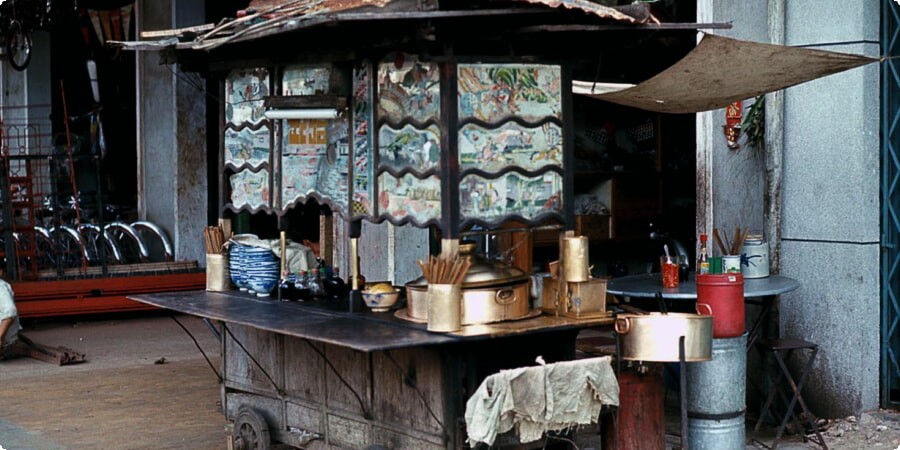
One of the city’s most famous dishes is pho, a fragrant noodle soup made with beef or chicken, served with fresh herbs and lime. Another must-try is bun cha, a dish of grilled pork served with rice noodles, fresh herbs, and a dipping sauce. Hanoi is also the birthplace of cha ca, a dish of turmeric-marinated fish grilled with dill and served with rice noodles, peanuts, and herbs. Street food is an integral part of Hanoi’s culture, and no visit would be complete without trying a banh mi, a French-inspired sandwich filled with meats, pickled vegetables, and fresh cilantro.
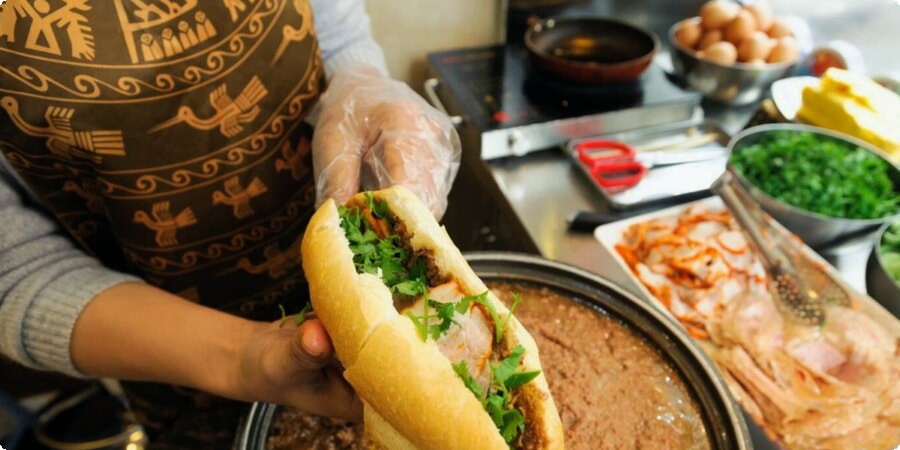
For those looking to explore Hanoi’s culinary offerings in depth, consider booking a guided food tour through Cityplanet, where local experts will take you to the best spots in the city.
Discover more about Vietnamese cuisine on Wikipedia
The Museums of Hanoi: A Glimpse into Vietnam’s Past
Hanoi is home to several museums that offer insights into Vietnam’s rich history and culture. Each museum provides a unique perspective, making them essential stops for anyone interested in the country’s past.
The Vietnam Museum of Ethnology is a fascinating place to start, showcasing the diverse cultures and traditions of Vietnam’s 54 ethnic groups. Through exhibits of traditional clothing, artifacts, and reconstructed homes, visitors can gain a deeper understanding of the country’s cultural diversity.
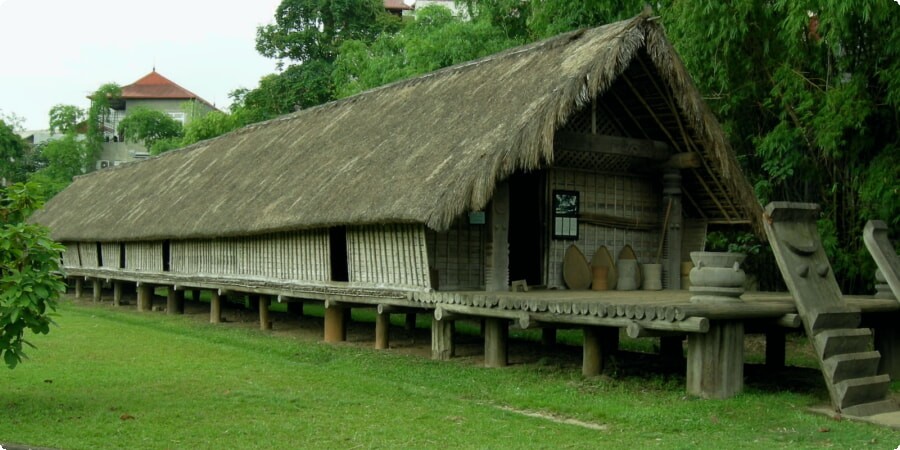
The Hoa Lo Prison Museum, often referred to as the “Hanoi Hilton,” offers a stark look at the city’s darker history. Originally built by the French to house Vietnamese political prisoners, the prison later held American POWs during the Vietnam War. The museum’s exhibits provide a sobering reminder of the struggles faced by those who fought for Vietnam’s independence.
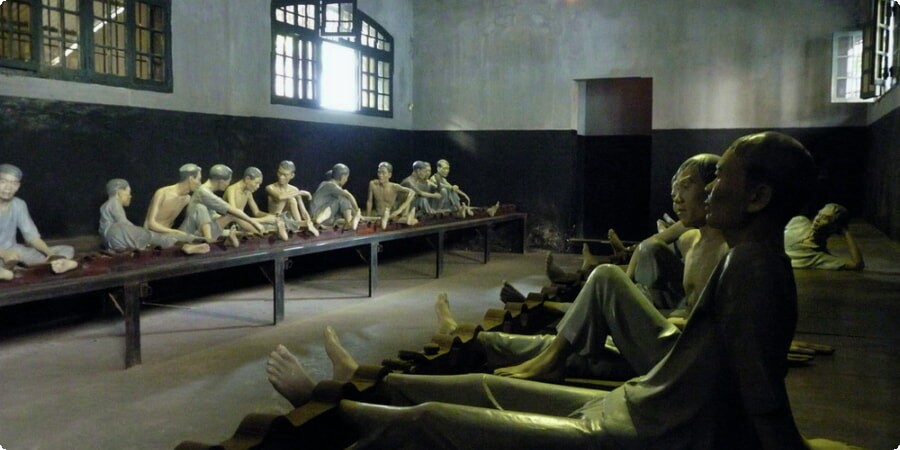
For a broader overview of Vietnam’s military history, the Vietnam Military History Museum is a must-visit. The museum features a wide range of exhibits, including tanks, aircraft, and weapons, alongside detailed accounts of the country’s various conflicts.

Explore the Vietnam Museum of Ethnology on Google Maps
Learn more about the Hoa Lo Prison on Wikipedia
Exploring Hanoi’s Temples and Pagodas: Spiritual Sanctuaries
Hanoi is a city deeply rooted in spirituality, with numerous temples and pagodas that offer a glimpse into the city’s religious and cultural life. These sacred sites are scattered throughout the city, each with its unique history and significance.
The Tran Quoc Pagoda, located on a small island in West Lake, is one of the oldest Buddhist temples in Vietnam, dating back over 1,500 years. The pagoda’s serene setting, with its towering structure and tranquil surroundings, makes it a peaceful retreat from the city’s bustle.
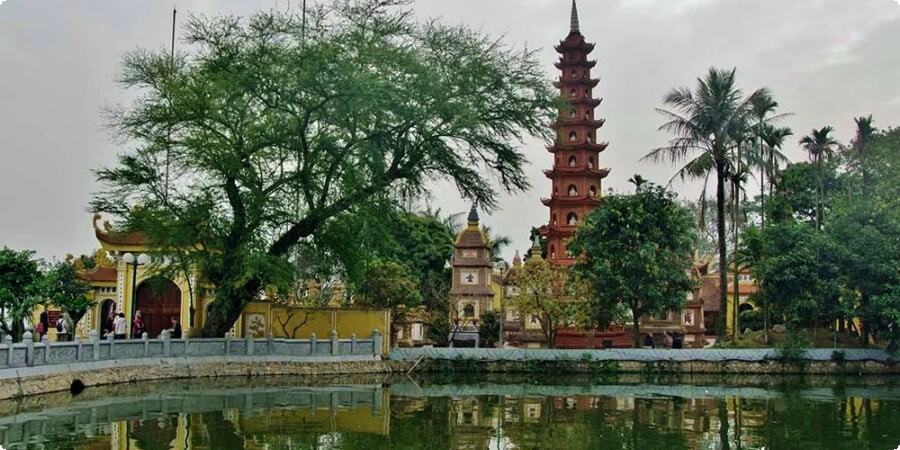
Another notable site is Quan Thanh Temple, a Taoist temple dedicated to Tran Vu, the God of the North. This ancient temple is renowned for its impressive bronze statue of Tran Vu, which stands over three meters tall and weighs around four tons.

The One Pillar Pagoda is another must-see, known for its unique architecture and historical significance. Built in 1049, the pagoda is designed to resemble a lotus blossom, a symbol of purity in Buddhism. The pagoda is one of Hanoi’s most iconic structures and is a popular spot for both locals and tourists.

For those looking to explore these spiritual sites and more, renting a car is a convenient option. Consider Luckycar for reliable car rentals, making it easy to navigate the city and its surroundings at your own pace.
Visit the Tran Quoc Pagoda on Google Maps
Learn more about the One Pillar Pagoda on Wikipedia
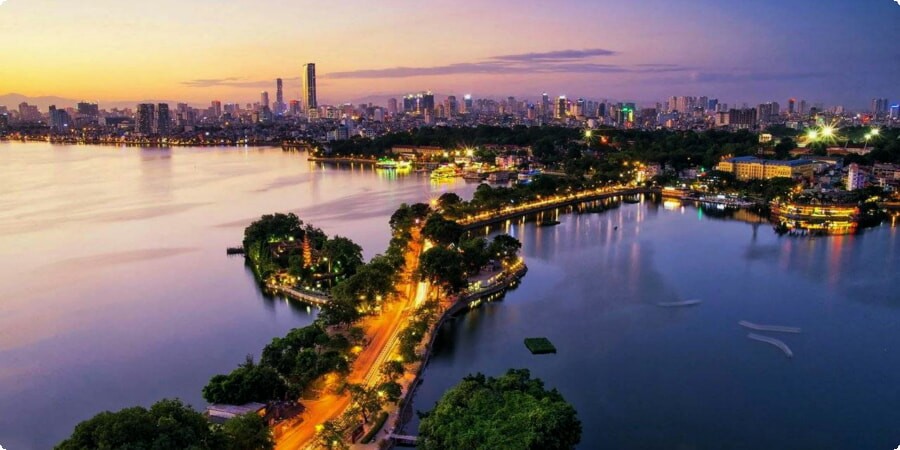
Hanoi is a city that captivates with its rich history, vibrant culture, and endless charm. From its bustling streets to its tranquil lakes and spiritual sanctuaries, every corner of the city offers something unique to discover. Whether you’re exploring the ancient temples, savoring the local cuisine, or simply wandering through its historic quarters, Hanoi promises an unforgettable experience that will stay with you long after you leave.